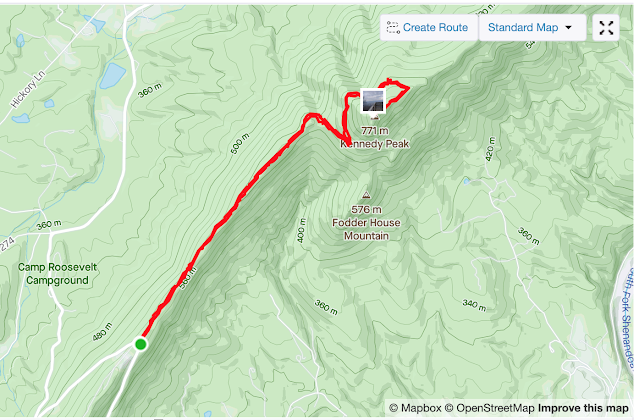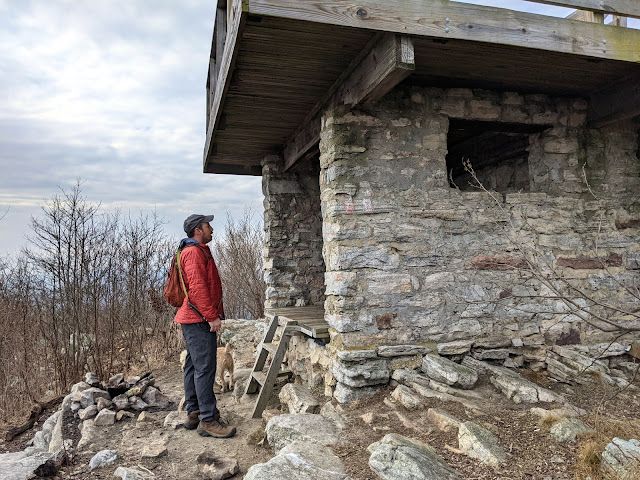
A lot of people seem confused about the difference between some of our protected areas and for good reasons, there are a lot of terms we throw around. We have National Parks, National Forests, National Refuges, and National Monuments to name a few. They are all protected for various reasons but are basically protected in different ways with various levels of restrictions. For today's post, let's talk about the difference between National Parks and National Forests.

So which one was first to be protected? National Parks actually came first.
National Parks vs National Forests

So which one was first to be protected? National Parks actually came first.
In 1872 when President Ulysses S. Grant signed a law designating Yellowstone as the nation's first national park. National Forests came around later in 1891 when the Forest Reserve Act allowed the President to establish forest reserves. The major difference is the type of protection and variety of use and this little table sums it up pretty well.
If you look at a map in the Shenandoah Valley area of Virginia, you will see large swathes of dark green blobs traversing the area from north to south. You have Shenandoah National Park (farthest east), next door to George Washington and Jefferson National Forest and Monongahela National Forest (bet you haven't heard of these). All our protected land (with different levels of protection) offering a ton of recreation opportunities.

We spent a day in Shenandoah National Park and wanted another hike close by before heading to Luray Caverns and traveling back to Connecticut. Looking at All Trails for some ideas and glancing at the map, we decided to hike in George Washington and Jefferson National Forest. This turned out to be the closest hiking area right next to our Airbnb, the one we had actually traveled across to get to Shenandoah. We knew it was dog-friendly, would be VERY quiet, and was not in a fee area. We found a highly reviewed hike, packed the car with the dogs and some snacks, and headed into the National Forest.
Kennedy Peak offered an out and back (5.5 miles) or a loop option (9.5 miles). Either way, this hike takes you to an old fire tower offering amazing views from the top of Kennedy Peak. 34 weeks pregnant we (me) decided on the "5.3 miles out and back" option. We were the first car to the trailhead at 9:30 am on a Friday and 1 of only 3 cars by the time we returned mid-day.







If you look at a map in the Shenandoah Valley area of Virginia, you will see large swathes of dark green blobs traversing the area from north to south. You have Shenandoah National Park (farthest east), next door to George Washington and Jefferson National Forest and Monongahela National Forest (bet you haven't heard of these). All our protected land (with different levels of protection) offering a ton of recreation opportunities.

We spent a day in Shenandoah National Park and wanted another hike close by before heading to Luray Caverns and traveling back to Connecticut. Looking at All Trails for some ideas and glancing at the map, we decided to hike in George Washington and Jefferson National Forest. This turned out to be the closest hiking area right next to our Airbnb, the one we had actually traveled across to get to Shenandoah. We knew it was dog-friendly, would be VERY quiet, and was not in a fee area. We found a highly reviewed hike, packed the car with the dogs and some snacks, and headed into the National Forest.
Kennedy Peak offered an out and back (5.5 miles) or a loop option (9.5 miles). Either way, this hike takes you to an old fire tower offering amazing views from the top of Kennedy Peak. 34 weeks pregnant we (me) decided on the "5.3 miles out and back" option. We were the first car to the trailhead at 9:30 am on a Friday and 1 of only 3 cars by the time we returned mid-day.

Trail Statistics
Highlights: Easy to follow trail that takes you to the summit of Kennedy Peak - old fire tower offering 360 views of the mountains and valley below
Parking: Kennedy Peak Trailhead in GWJ National Forest - there are parking areas on either side of the bend (see photo above). According to AllTrails, people have been towed for having wheels on the road and for blocking Mt. Top Drive in the inside parking lot so be aware. You can find the parking areas at the end of Mt. Top Drive off of Camp Roosevelt Road (Route 675).
Trail: Orange blazed Massanutten trail
Distance: 5.5 miles (out and back option)
Elevation (gained): 1,021'
Elevation (summit): 2,530'
Dogs and kids: Dog-friendly (on-leash), good for older/experienced kids (length and elevation)


After parking, we grabbed a small bag with water and snacks and followed the orange Massanutten blaze trail. The trail is mostly level with a steady moderate incline as you make your way up the mountain. Right away, we saw the beauty of this trail in the winter. We didn't see anyone for the first hour, the lack of leaves on the trees meant we had an awesome view from the ridgeline, and the dogs were able to be off-leash (under immediate control thanks to all our training and e-collars). The trail was well maintained, well marked, and easy to follow and after 1.5 miles, you start to gain elevation and some switchbacks and steeper terrain will bring us to the summit.



At the summit, there is a large old fire tower with an open deck at the top, offering a seating area and amazing views of the landscape below. The bottom half has a sort of protected platform/shelter area and we spent a few minutes here enjoying the view and sharing our excitement of how great we thought this trail was. Instead of completing the loop which would almost double our mileage, we decided to follow the same trail back down the mountain and to the parking area. We saw one group of hikers on our way up, and just two groups of hikers on our way down. It was quiet, just enough of a challenge, and the views at the summit were worth the 1,000' elevation gained to get there.

National Parks get all the glamor but there are some amazing open spaces and trails in the other protected areas around the country. These areas offer a lot more flexibility, often allowing motorized vehicles on some trails, horses, and bikes. You will probably come across a cow or two as you drive through a National Forest but you will rarely come across fee areas and large crowds. If you want to bring Fido and the National Parks by you are not dog friendly, scroll around a map and find a nearby National Forest.

No comments :
Post a Comment
Let's Chat!